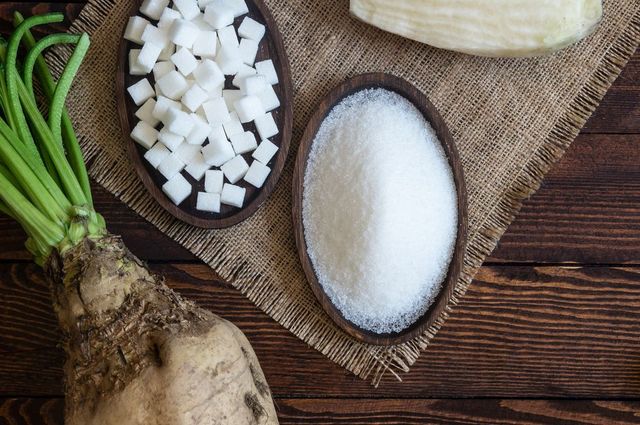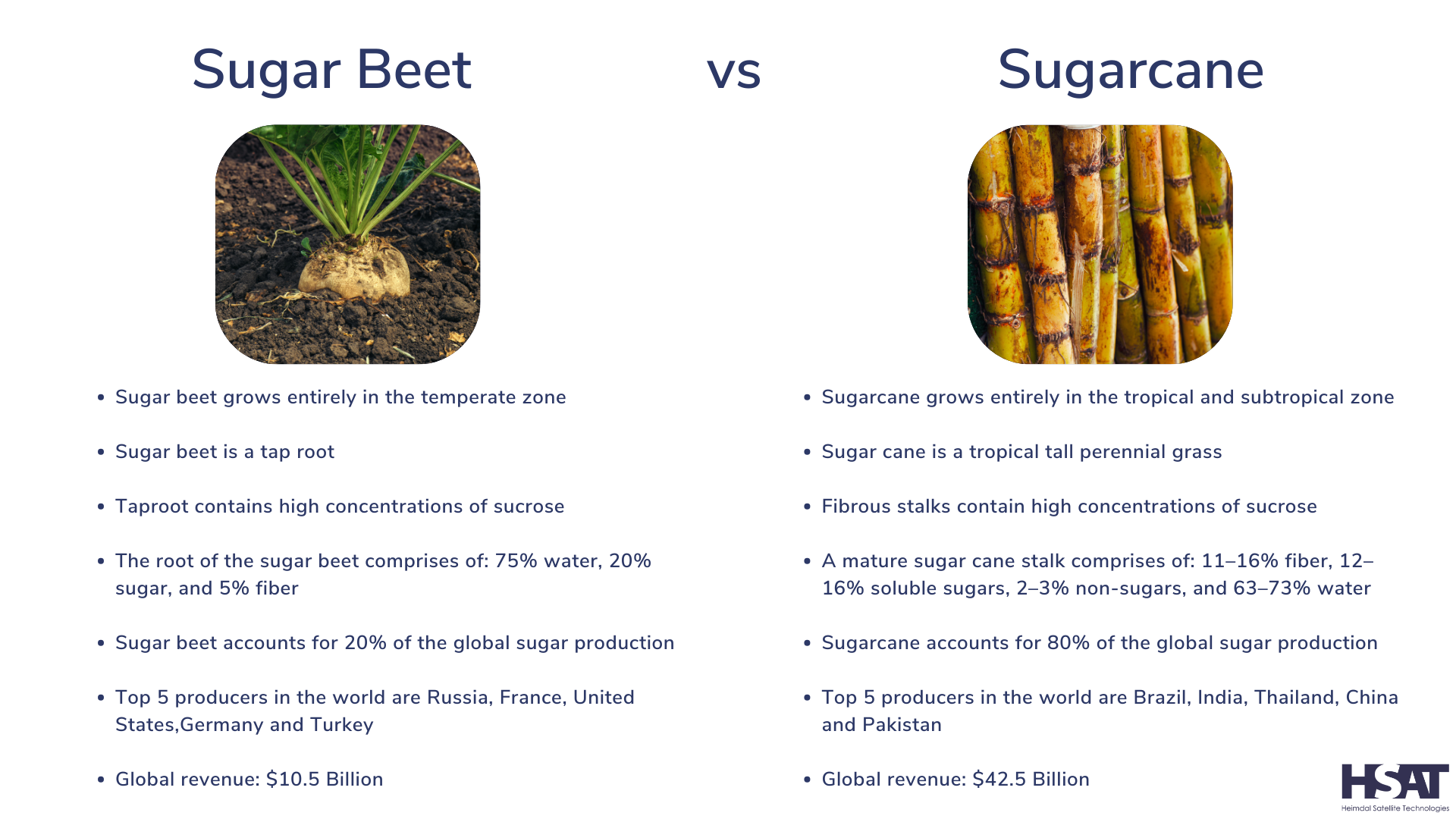Beetroot Sugar Vs Cane: Discover the Finest Selection for Your Sweetening Demands
The option in between beetroot sugar and cane sugar prolongs beyond mere sweetness; it incorporates elements such as taste accounts, production methods, and nutritional benefits. The natural undertones of beetroot sugar might not enhance every recipe, whereas walking cane sugar is usually favored for its clean preference.
Review of Beetroot Sugar
Beet sugar, frequently acquired from the sugar beetroot plant, is often utilized as a key artificial sweetener in different food products. The sugar beet, a biennial plant, thrives in pleasant environments and is primarily grown in areas such as Europe and The United States And copyright. beet sugar vs cane. The extraction process entails cutting the beets and drawing out the juice, which is then detoxified and taken shape to create granulated sugar
One noteworthy characteristic of beet sugar is its chemical composition, which is almost similar to that of cane sugar, as both consist mainly of sucrose. This resemblance enables beet sugar to be made use of reciprocally with walking stick sugar in dishes and food manufacturing.
Beetroot sugar is likewise kept in mind for its versatility in different applications, including baking, drink formulation, and confectionery manufacturing. Additionally, the beetroot sugar sector has made strides in lasting techniques, with many producers executing ecologically pleasant farming methods.

Introduction of Walking Cane Sugar
Walking stick sugar, stemmed from the sugarcane plant, is just one of the most widely identified and utilized sugar worldwide. It is largely composed of sucrose, a disaccharide that offers a pleasant flavor account crucial for various cooking applications. Walking cane sugar is commonly located in granulated kind but is also readily available as raw sugar, brown sugar, and powdered sugar, each serving distinctive objectives in food preparation and baking.
The cultivation of sugarcane is famous in subtropical and tropical areas, adding to its extensive accessibility. The plant grows in warm climates, requiring sufficient sunshine and water for optimum growth. Walking cane sugar is usually valued for its all-natural manufacturing method and marginal handling, which maintains its flavor and nutritional residential properties.
In addition to its cooking usages, cane sugar plays a substantial duty in the food industry, working as a preservative, fermentation substrate, and texturizing agent. Its flexibility prolongs beyond food, locating applications in drinks, confections, and also cosmetics. With a long background and a strong cultural existence, cane sugar remains to be a recommended choice for consumers seeking an all-natural sweetening option.
Manufacturing Procedures Contrasted
When contrasting the manufacturing procedures of beetroot sugar and walking cane sugar, it becomes clear that each method mirrors the unique features of its resource product. Beet sugar manufacturing starts with collecting sugar beets, which are then washed, cut, and based on warm water extraction to dissolve the sugar. The resulting juice goes through purification with liming and carbonation, followed by evaporation to focus the juice. Lastly, crystallization occurs, yielding raw sugar, which is then improved to generate the last product.
In contrast, walking stick sugar manufacturing involves harvesting sugarcane stalks, which are squashed to remove juice. The cane sugar procedure integrates a much longer milling and pressing phase, which helps in removing maximum juice from the stalks.
Both procedures stress efficiency, but the methods highlight differences in devices and power usage. Beetroot sugar tends to have an extra simple processing course, while cane sugar production can be a lot more complex because of the coarse nature of the walking cane stalks. Eventually, these differences shape the attributes of the sugars produced.
Nutritional Profiles and Advantages
Sugar, a staple in many diet plans, differs in dietary accounts and benefits depending upon its resource. Both beetroot sugar and walking stick sugar mostly include sucrose, giving similar caloric web content-- roughly 4 calories official site per gram. Refined distinctions can influence customer options and assumptions.
Beet sugar is obtained from sugar beetroots, which include little quantities of vitamins and minerals, such as potassium and calcium, yet these nutrients are existing in minimal quantities when consumed in common quantities. Alternatively, walking stick sugar, drawn out from sugarcane, might supply similar trace nutrients, yet the distinctions are mostly insignificant and minimal in the context of a balanced diet.
One noteworthy aspect is the ecological influence of each source, which can indirectly influence dietary choices. Beetroot sugar manufacturing is usually seen as more sustainable as a result of reduced water use compared to walking cane sugar farming. Additionally, some individuals like beet sugar because of its non-GMO status in specific regions, potentially aligning with health-conscious consumer trends.

Flavor Distinctions and Utilizes
Unique flavor accounts identify beet sugar and walking cane sugar, affecting their applications in various cooking contexts. Beetroot sugar has a somewhat earthy taste, which can be credited to the dirt in which the beetroots are expanded. beet sugar vs cane. This refined taste might not be obvious in the discover this majority of dishes, but it can influence the total taste in delicate meals, such as meringues and certain frostings. Conversely, walking stick sugar offers a cleaner, more simple sweet taste that is usually liked for cooking and treats, as it boosts flavors without eclipsing them.
In useful terms, beet sugar and walking cane sugar can normally be made use of reciprocally in many dishes. Pastry cooks and culinary professionals often lean in the direction of walking stick sugar for its premium capability to caramelize, which is important in producing intricate taste profiles in sauces and confections. Furthermore, walking cane sugar is favored in drinks, as its taste dissolves flawlessly, preserving the stability of the beverage.
Ultimately, the option in between beetroot and walking stick sugar might come down to individual preference and the details requirements of the recipe, with each kind offering unique qualities that can improve the cooking experience.
Conclusion
In summary, the selection in between beet sugar and walking cane sugar depends upon certain culinary applications and individual wellness factors to consider. While beet sugar presents a somewhat natural taste and lasting manufacturing advantages, cane sugar's cleaner sweetness is often preferred in cooking and delicate dishes. Reviewing the production procedures, dietary accounts, and taste informative post distinctions can assist customers in picking one of the most appropriate sugar for their requirements, making sure both taste satisfaction and placement with nutritional choices.
Beetroot sugar, generally acquired from the sugar beetroot plant, is regularly made use of as an essential sweetening agent in different food items. Walking cane sugar is generally found in granulated type however is likewise readily available as raw sugar, brownish sugar, and powdered sugar, each serving distinctive objectives in food preparation and baking.
When comparing the manufacturing processes of beet sugar and cane sugar, it comes to be clear that each method reflects the special features of its source product. Beet sugar manufacturing begins with gathering sugar beetroots, which are then washed, cut, and subjected to hot water removal to dissolve the sugar. Beetroot sugar has a tendency to have a more uncomplicated processing path, while walking cane sugar manufacturing can be more complicated due to the fibrous nature of the walking cane stalks.
Comments on “Beet Sugar vs Cane: Which Sugar Source Is Better for Organic Products?”